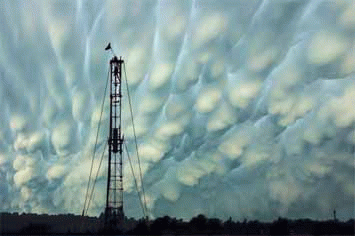We be fracked by jdial
To indicate bargain status of something
(or perhaps more commonly to prime the pump toward future purchases), people
used to say, "It's free as water." I
haven't heard anyone use that comparative for a long time, at least not here in
the bone-dry West. We've got the bottled
water to render that aphorism extinct.
Reagan Waskom[1], a water engineer currently
residing at Colorado State University, provided lecture attendees a wealth of insider
information.
Colorado gets its water primarily from its high-country
snowpack. Most of it--almost two-thirds
of the annual flow--melts like ice cream in the late spring and early summer
while the months of December, January, and February produce only three percent
of the year's runoff. Once liquefied, Colorado river water rushes
to exit the state. And most of that water makes its escape. Of the annual 15
million acre-feet of water that
Colorado's mountains and streams are expected to produce on average--and that average
varies wildly--10 million acre-feet or two-thirds of the expectation are
appropriated elsewhere. It goes to the other-basin
states (Colorado, accompanied by New Mexico, Utah, and Wyoming, are upper-basin
states while Arizona, Nevada, and California are lower-basin states) and has
since 1922. The other-basin states don't
look kindly to Colorado taking more than its allocation. When Wyoming challenged Colorado's right to
divert headwaters of the Colorado River to Colorado's front range, the U.S.
Supreme Court ruled that those waters would be governed by the Doctrine of
Prior Appropriation--first come, first served. Wyoming's claim was primary.
Water rights in the US are overseen by the states and reflect differences in abundance. In the East where water is plentiful whoever owns the river bank controls the water; this is the riparian system. As population and development increased the regulated riparian system developed; users now needed permits. The West developed the appropriation system that put miners ahead of riparian uses and severed water from land ownership. Groundwater is confusingly governed by a blend of these policies, and all disagreements are explored in courts devoted to water altercations.
When the seven states of the upper and lower river basin signed the Colorado River Compact , they had calculated that Colorado's runoff supplied about 16 million acre-feet of water each year, of which the other-basin states would be allocated 10 MAF. It turns out that the figure they used was optimistic, based on times of abnormally high snowpack. Theoretically Colorado gets to keep five MAF of the water its snowpack releases each year. In fact it keeps what remains after all prior appropriations are met. Per the 1922 agreement , over any 10-year period upper-basin states must provide to lower-basin states an aggregate flow of 75 million acre-feet. Although there is a little wiggle room provided by a set of interim allocation guidelines that recognize low-reservoir conditions, amounts owed downstream don't much reflect reality. And although long-term precipitation measures over the past century are not deemed to have changed, the Colorado River region has shown a steady upward trend in temperature since the late 1970s. A 2007 report by the National Research Council found that the most recent 11-year temperature average exceeds any previous values in over 100 years of recordkeeping, and that the Colorado River basin has warmed more than any other region in the country.
An acre-foot of water is the amount of water that would
cover an acre--about the size of a football field--one foot deep. That is around 326,000 gallons of water; an
Olympic-sized pool contains about twice that.
One acre-foot of water is thought sufficient for the home, irrigation, and
industrial needs of four to five city people in one year. (Do rural folk use more or less?)
Of the water that Colorado gets to keep, how is it
allocated? In this state, cities use 10% of the water and
agriculture 90%, all portioned out by seniority.
The Rocky Mountains, once the bed of a vast cretaceous sea, are bounteously underlain with fossil fuels. Thirty of the top 100 US gas fields as of
2009 touch Colorado.
Oil shale was a boom in Colorado in the 80s. It is not to be confused with shale oil. Oil shale is rock with solid hydrocarbons trapped within it, while shale oil and gas are carbon-rich deposits that tend to have pockets of liquid oil and gas within them. Conventional drilling taps gas pools in rock, while unconventional targets tiny pockets of gas in tight sands, tight rock, and shale. The Niobrara shale in eastern Colorado has been mapped for a long time, but it became accessible only with the advent of unconventional fracking. And access is feverish. There are 50,000 oil and gas wells in Colorado now, twenty thousand of those in Weld County north of Denver.
Frack fluid is 90% water and 9.5% sand proppant, which holds open the pressure-created cracks in the shale. About 0.5% of the fluid typically consists of acids for cleaning perforations and initiating rock fissures, surfactant to minimize friction, salt to delay the breakdown of the gel polymer, ethylene glycol to prevent scale formation, borate salts to maintain viscosity, isopropanol to increase viscosity, sodium and potassium carbonates to maintain crosslinkers, glutaraldehyde to disinfect, citric acid to prevent corrosion, and gelling agents. Proppant can be gel, foam, or slickwater based. Slickwater is water made slick through chemistry.
Water used in conventional drilling had a limited role, that of carrying cut
rock to the surface and keeping the bits cool and lubed. A conventional vertical well required about
150,000 gallons of water. Unconventional
drilling requires much more water, Waskom said, and it must also be fairly pure
so that it doesn't alter the chemicals.
The initial, vertical portion of fracking requires at least as much water as for
conventional drilling and up to one million gallons of it, since it goes
deeper than the wells of yesteryear. Then
the shaft turns horizontal.
Each horizontal well segment, often resembling spokes in form and number,
requires between two to five million gallons of water, depending on the
lateral-portion length. In each 'spoke' the casing is perforated and fluid
is forced out into the shale. It takes a
lot of it, and it takes this amount every time a lateral length is fracked to
keep the hydrocarbon flowing.
(Note: You can view every article as one long page if you sign up as an Advocate Member, or higher).






